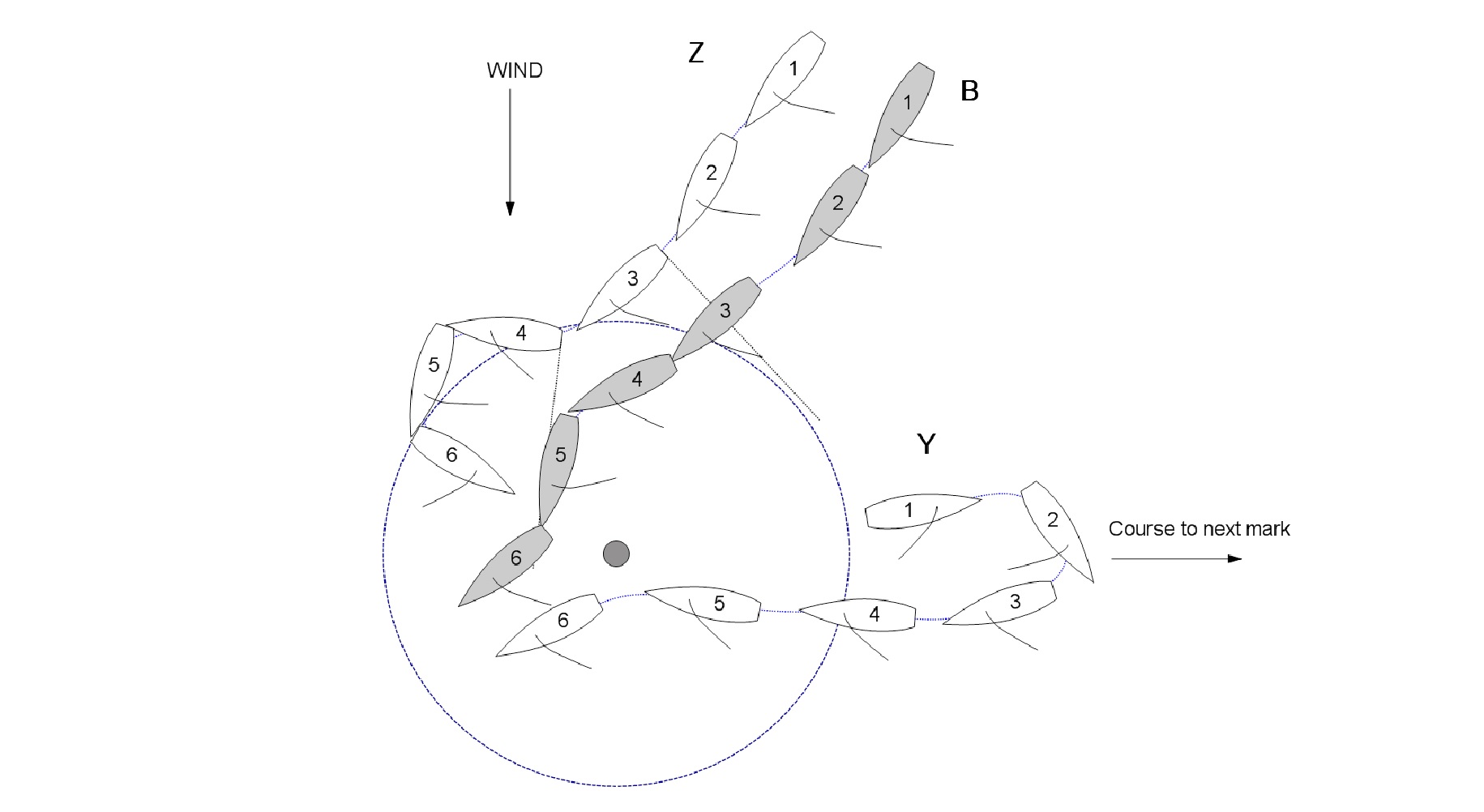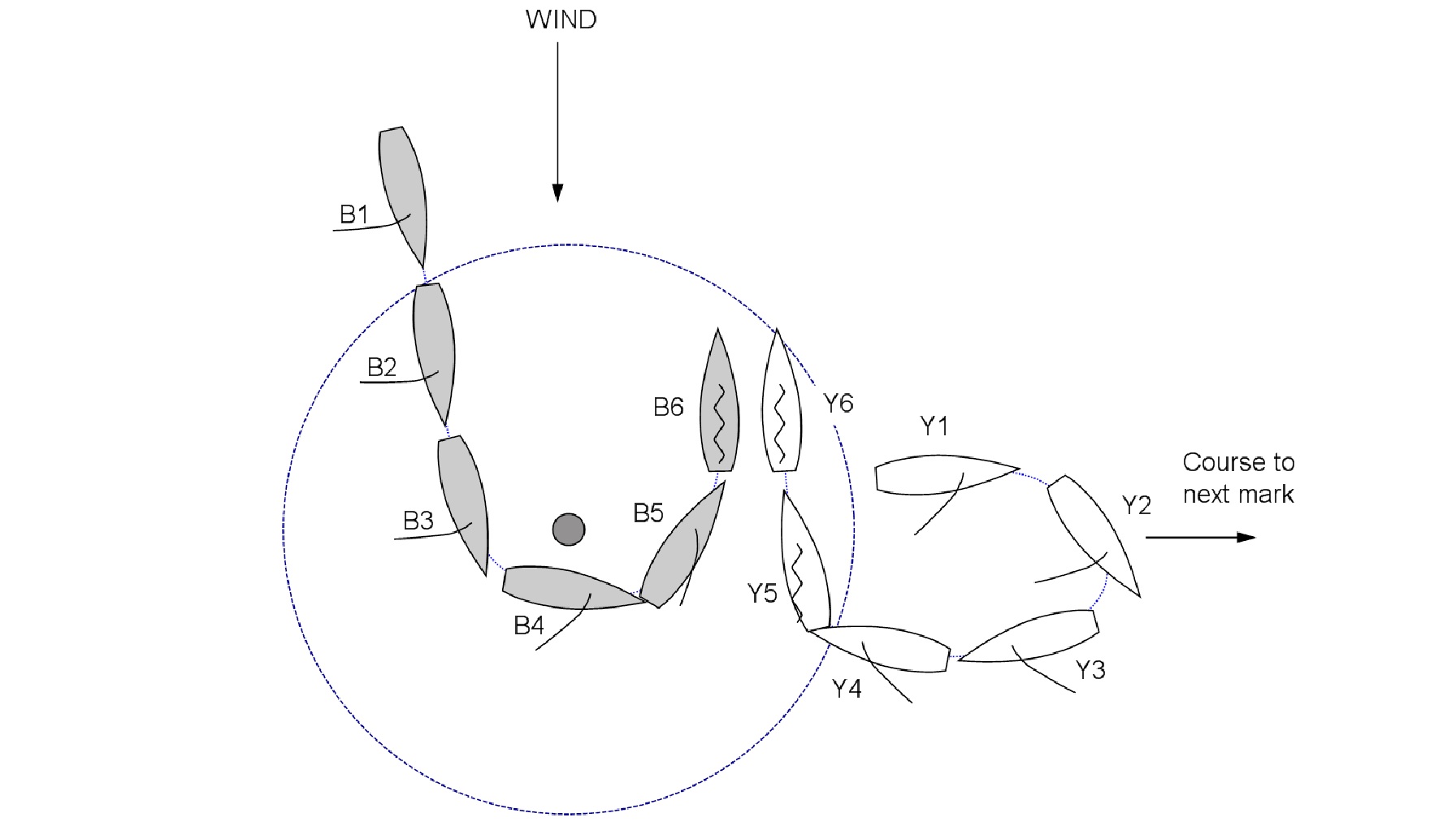


Section L – Other Rules
TR CALL L8
Rule 16.1, Changing Course
Rule 23.2, Interfering with Another Boat
Question 1
The boats are at a leeward mark to be rounded to port. Y and Z are on the same team.
Y has rounded the mark and is on the leg to the next mark. Y then reverses her course
and returns to trap B so that teammate Z can pass B. Between positions 5 and 6, B
starts to round the mark, but is prevented from doing so by Y, a right-of-way leeward
boat. B changes course to keep clear and there is no contact. B protests. What should
the call be?

Answer 1
Penalize Y.
At position 5, B is sailing on another leg of the course from Y. B is still on the
downwind leg and Y is on the leg to the next mark. B is windward boat and required
to keep clear of Y. At position 5 B has to luff to keep clear. Y was not sailing her proper
course when she causes B to change course to avoid her. Y breaks rule 23.2.
When, after position 5, Y can no longer pass to windward of the mark, the boats are no
longer clearly on different legs and rule 23.2 no longer applies.
At position 6, B is no longer sailing on another leg of the course from Y, because Y
has returned to the previous leg and B has not yet rounded the mark, nor is she sailing
towards the next mark.
Question 2
The boats are at a leeward mark to be rounded to port. Y has rounded the mark and is
on the leg to the next mark. As B enters the zone, Y bears away to gybe and sail back
to the mark in order to trap B. B rounds the mark and starts sailing to the next mark.
After position 3, Y luffs to a collision course with B. Both boats luff head to wind and
there is no contact. Blue protests. What should the call be?

Answer 2
No penalty.
At position 4, B is rounding the mark on the required side and is sailing towards the
next mark. The boats are no longer on different legs. Rule 23.2 does not apply. B is
subject to rule 10 and Y must comply with rule 16.1 when she changes course. B keeps
clear by luffing and Y complies with rule 16.1 by luffing to enable B to keep clear.







